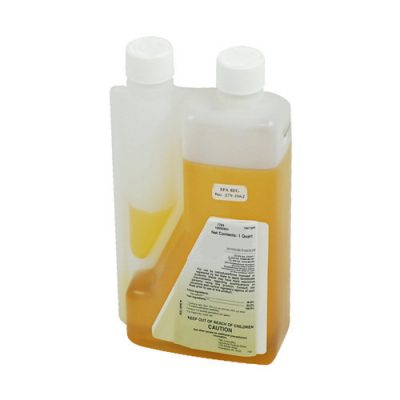Trump Weakens Protections for Toxic Pyrethroid Pesticides

Trump’s Environmental Protection Agency proposed today to weaken protections for 23 pyrethroids, a class of insecticides linked to autism, Alzheimer’s and Parkinson’s diseases and known to be highly toxic to bees and fish.
These reduced safeguards were requested by a consortium of sticide companies called the Pyrethroid Working Group. The neurotoxins are widely used on fruits and vegetables and in bug sprays and pet shampoos.
The EPA had initially considered a 66-foot-wide buffer of permanent vegetation between fields sprayed with the pesticides and any water body, as well as a 10 mph wind-speed cutoff for spraying. But the new proposal includes only a 10- to 25-foot-wide buffer and a wind-speed cutoff of 15 mph.
Today’s proposal follows the EPA’s August announcement that it would grant a pesticide industry request to end long-running safeguards meant to protect small children from pyrethroids, which have been shown to cause learning deficiencies.
“There’s no floor on how low this administration will stoop to appease the pesticide industry,” said Nathan Donley, a senior scientist at the Center for Biological Diversity. “Ignoring independent science in favor of whatever pesticide companies want is par for the Trump course. In their relentless push to cripple pesticide protections, EPA officials are shrugging off huge threats to children’s health and the survival of bees and other environmentally crucial creatures.”
Today’s announcement included the proposed reapproval of five of the 23 pyrethroids.
Proposals regarding the approval of the other 18 are pending.
A compelling body of independent research has documented the many harms posed by pyrethroids.
A 2016 EPA scientific analysis found that continued pyrethroid use will likely cause a “reduction in survival, growth and reproduction to non-target aquatic animals” and a potential risk to pollinators. The EPA also estimated that some pyrethroids would exceed water concentrations known to harm aquatic insects for up to 89 percent of the year.
The EPA’s August announcement that it plans to increase threefold the amount of pyrethroid exposure considered safe for children relied almost exclusively on confidential pesticide-industry studies and a model developed by an entity called CAPHRA, which is a working group of pesticide companies that sell pyrethroids. The agency ignored contradictory evidence from peer-reviewed studies and advice from two separate scientific advisory panels.
Independent research has shown that repeated exposure to pyrethroid insecticides can cause learning deficiencies and neurodegenerative effects associated with Alzheimer’s and Parkinson’s diseases, among others.
Epidemiological data has also revealed higher incidences of autism spectrum disorders and developmental delay among children whose mothers were living within about 1 mile of sites of pyrethroid applications during the third trimester of pregnancy.
“Small children and the environment are sacrificial pawns in the profit schemes of this disgustingly anti-science administration,” said Donley. “We should be following the research and increasing protections from harmful pesticides, not ditching them at the request of a morally bankrupt industry.”
*
Note to readers: please click the share buttons above or below. Forward this article to your email lists. Crosspost on your blog site, internet forums. etc.



